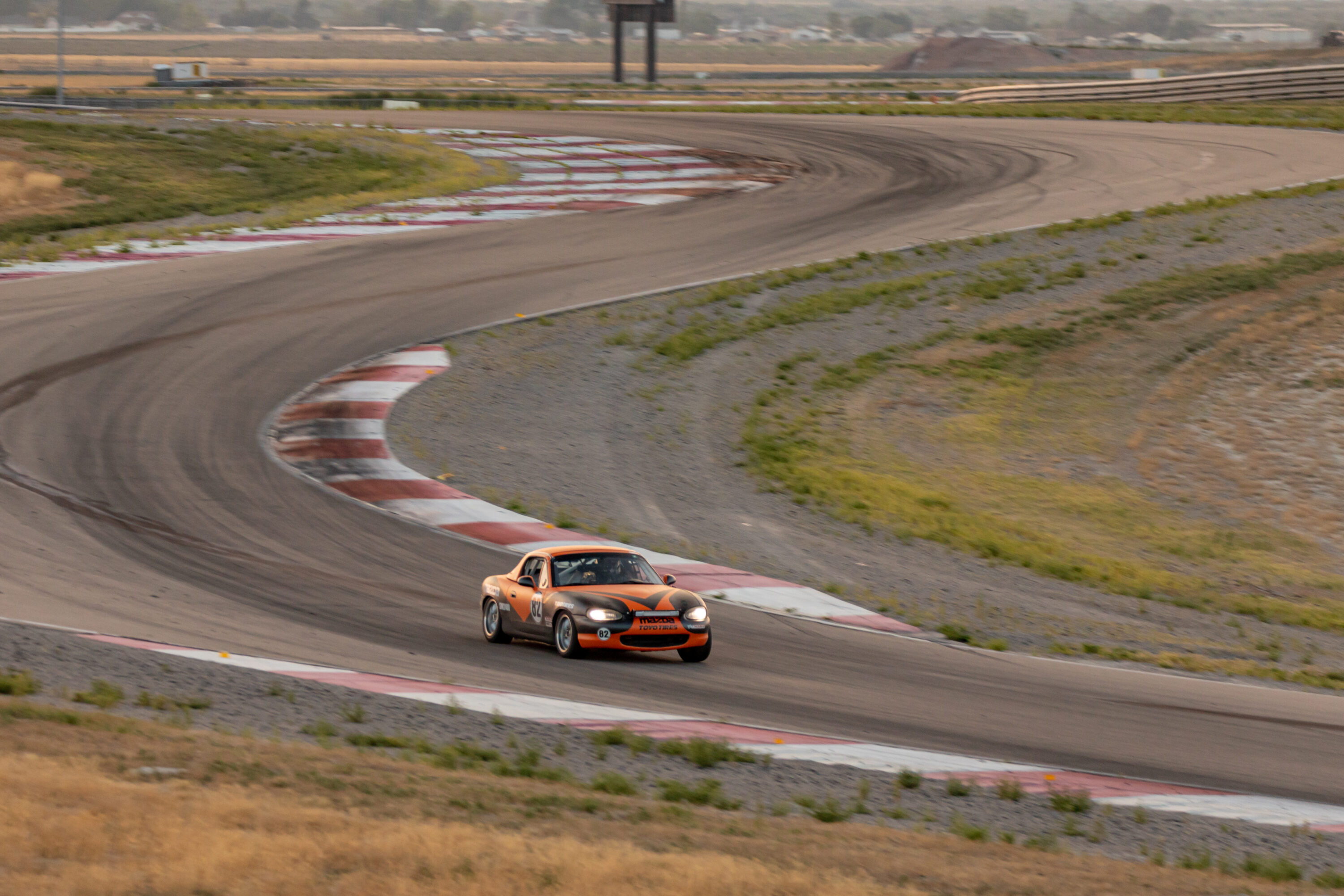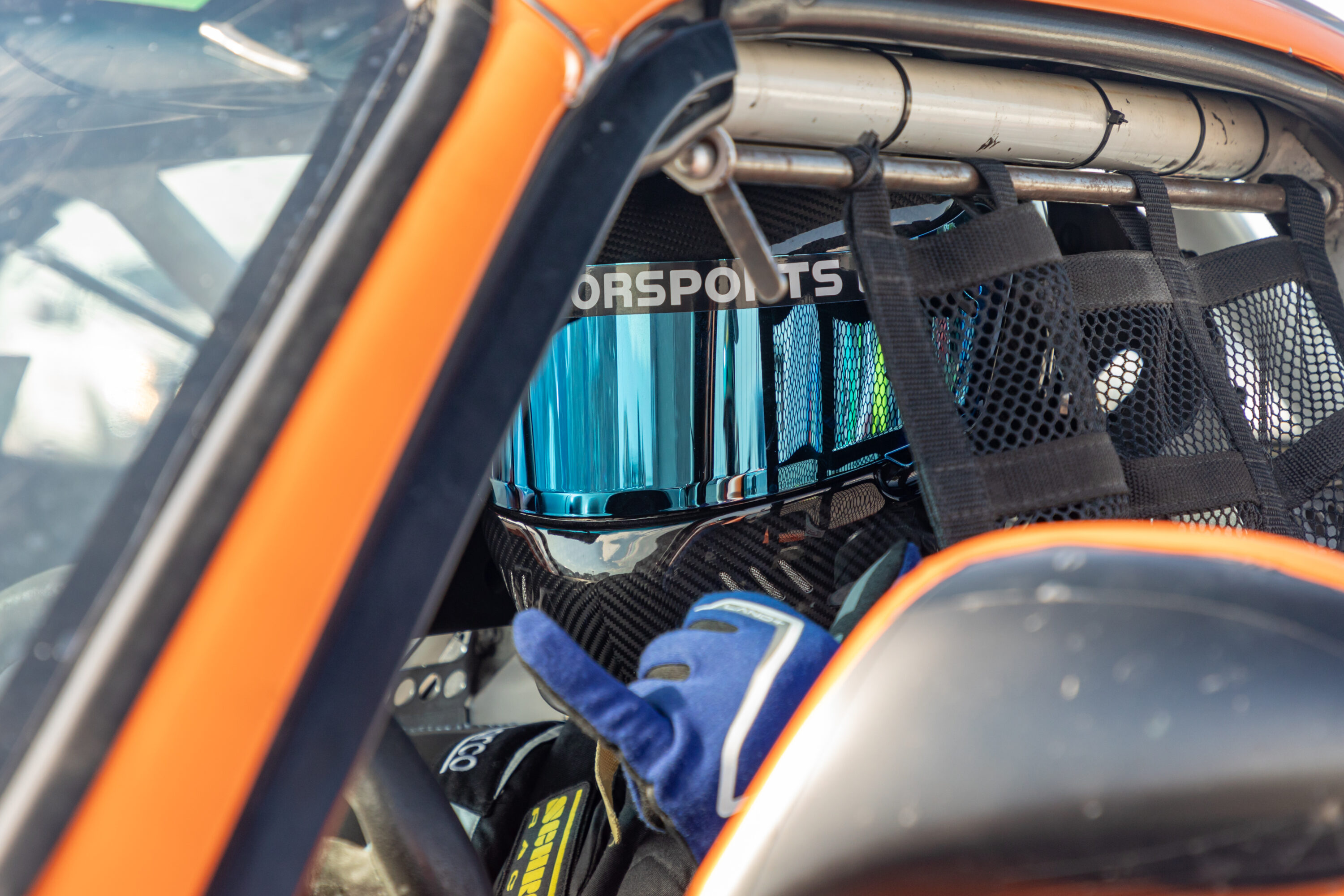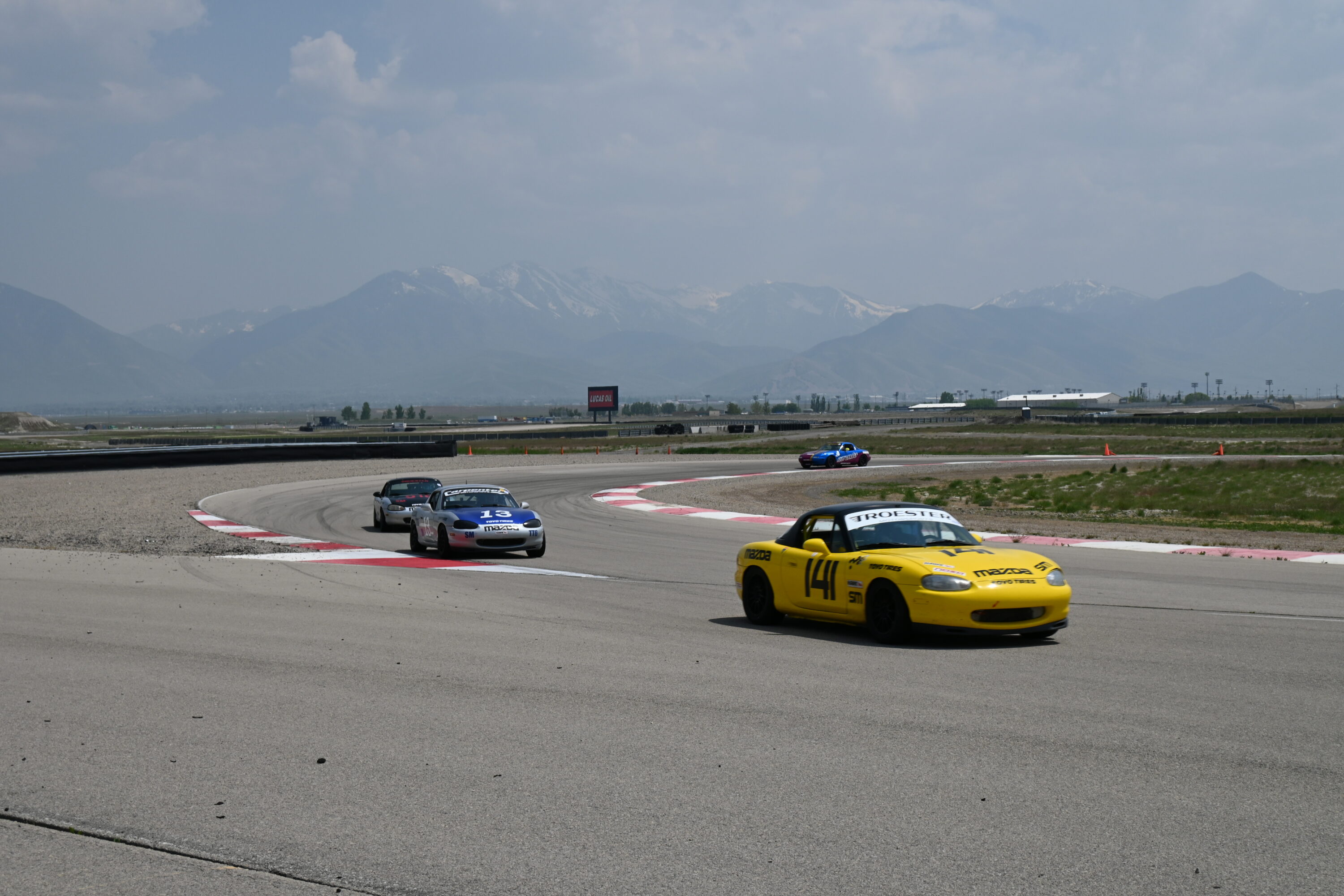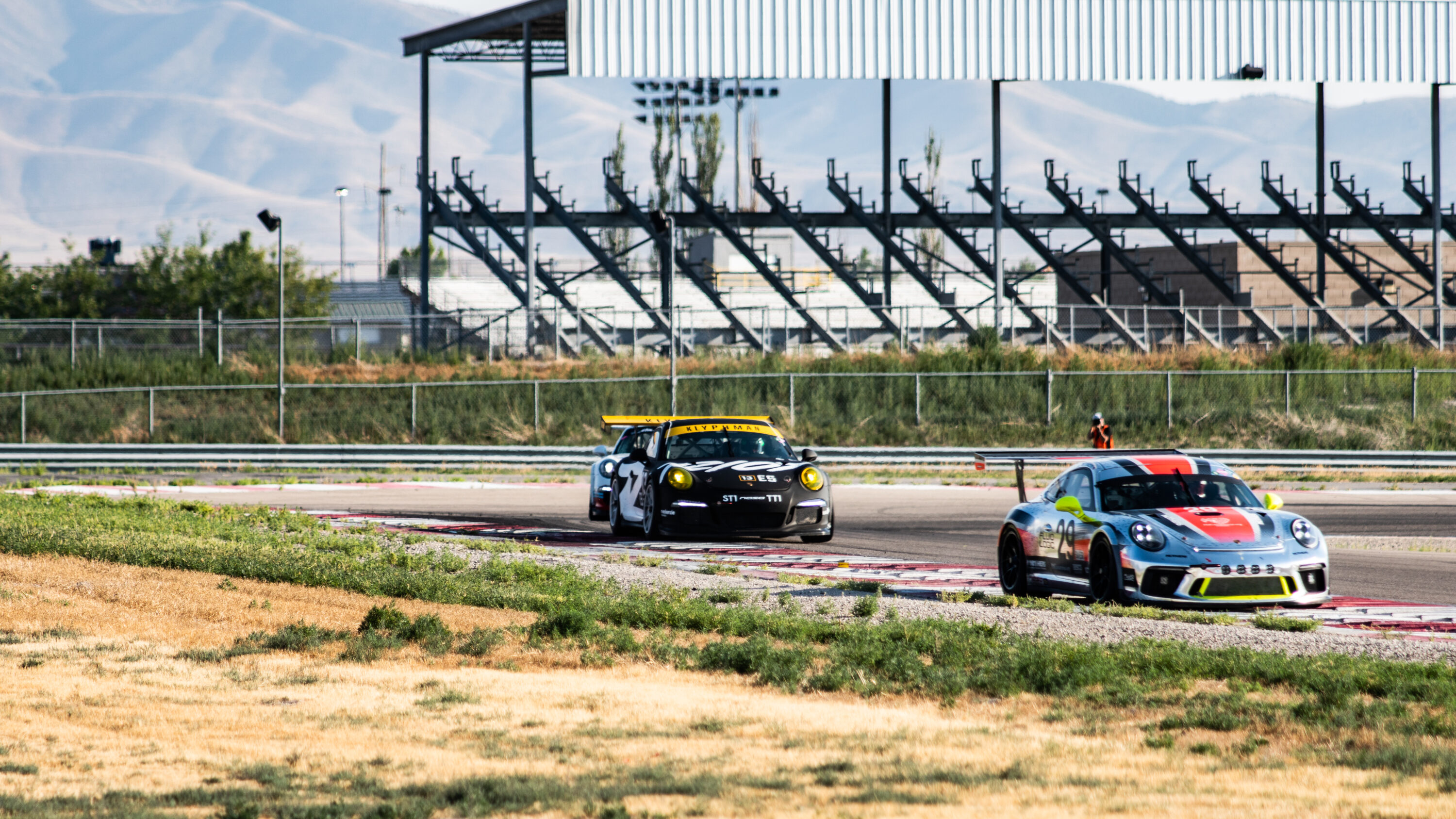My 2-hours stint in July heat proves it.

Buying a driver cooling system used to be a much bigger hurdle than it is today. No, they’re not the cheapest set of kit you’ll ever buy, but I now have proof that they’re essential for optimal performance (and safety, in certain situations).
When my dad bought his first Porsche GT3 Cup (a used 996 Cup), it came with one of these driver cooling systems — they’re simple and effective:
- A mountable cooler that holds ice water and pump
- A set of hoses that run to the driver’s seat
- A t-shirt with sewn-in tubing that bring icy-cold goodness below the driver’s fire suit
I was much younger back then and I scoffed, thinking “do real racers use these, or is it just because the previous owner had cash to burn and was out of shape or something?”
Over time, I found that real racers indeed use these systems — particularly when running closed-cockpit cars, like the Porsche GT3 Cup and Lamborghini Super Trofeo, because the cars come with plexiglass windows that are fixed in-place.
This is great for aerodynamics, but bad for driver comfort. Despite factory and aftermarket NACA ducts that pipe exterior air to the driver, they are proverbial ovens — just like if you were to be sitting in the hot parking lot with the A/C off… then start doing some plyometrics.
Some of the latest factory race cars even come with A/C systems that duct cooling air through the rear of the driver seat under braking!
But I digress — the most economical option for any driver is going to be an ice/water/t-shirt system like a CoolShirt.
Fast Forward to the 2022 NASA Utah 6-Hour Enduro
That was many years ago. Nowadays, I’d come around to the idea of running cooling when I could afford the weight in the car — I found it to be much more comfortable, though until now I had no particular data to back up if it made a performance difference.
I ran a 2-hour stint in my buddy’s 99 Spec Miata. Our goal was to run three drivers, two pit-stops, and take the win.
The NASA 6hr is unique because it runs from 6pm to Midnight in the heat of summer (July 30th in 2022, to be precise).
The first driver gets the hottest stint, the second driver gets to be blinded by the setting sun, and the third driver runs entirely in the dark.
I pulled the first stint. We debated about running a CoolShirt for me and the second-stint driver, because the fully-filled kit weighs in at about 27 pounds — nothing to scoff at when the car+driver weighs 2400 pounds prior to fueling and only pulls 119HP on a cool day! Every 15 pounds essentially costs you about 1 horsepower.
We opted to run the CoolShirts for the first two drivers. I brought my box and we used one of our buddy’s boxes — job done.

CoolShirt Failure
About three minutes into my stint, the box failed. I felt the trickle of water slow, then stop altogether… Hmm…
I was running the borrowed CoolShirt box that had been sitting dormant for the last four-odd years. I feared the worst, but did some routine checks on each straightaway:
- Cycled power
- Checked connections to my shirt
- Couldn’t check wiring (for obvious reasons)
- Box was in the trunk, so couldn’t verify that the hoses were connected there
No luck — I flipped off the switch and focused on the drive. My theory was that the dormant box’s pump had failed due to lack of use… but who knows.
Two Hours in the Sauna
I wouldn’t say ‘miserable’, but it was definitely distracting.
Sweat would trickle into my eyes, which burned, so I kept my visor slightly cracked for some airflow. I couldn’t go all the way, because the sun angle was horribly low and I needed the tint.
I’d stuff my hand out the window on about 50% of the straightways (and sometimes through Witchcraft, T7!)

About 60 minutes in, I also had to consciously lift my right leg off of the seat bolster. It was an aluminum unit and contacted the driveshaft/exhaust tunnel. Jason later reported that he had a gnarly blister from his stint!
So I spent the majority of two hours running lackluster laps (mostly due to my lack of seat-time this year) and working out a system of having cracked my visor just enough to be able to lean my head just-so and duct some air up my face on the straightaways.
Meanwhile, the aluminum seat bottom and right side got nice and warm, adding to my baking effect.
Pit, Pit, Pit
At about 2:05 into the race, the car told me it needed gas just as we’d planned: it fell on it’s face in Right Hook/Knockout (T6) from fuel starvation.
That is a very disconcerting feeling, even though we all knew it was coming any lap after the 1:50 mark in the race.
Some yellow-flag laps had helped, and I had done my job by keeping P1 just a handful of seconds ahead of us.
When I got out, I stood up and took a breath… the hot wind felt like a blast of air conditioning, relative to the blast furnace I had been sitting in for the last two hours.
Then I snapped-to and helped Blake get in and we executed our pit stop checklist.
Physiological Effects
Some time later, after I’d peeled off my sodden t-shirt and pounded a hydration drink and a few bottles of water… I took a peek at my Garmin Fenix 5x

I had been running an average HR of something like 160bpm for the entire time, with two exceptions for yellow-flag laps! No wonder I felt like had been hit by a truck.
It’s never easy running two straight hours in a car — I’d done so on multiple occasions before — but this was something new.
I later compared my HR data to Blake’s (who had a working CoolShirt box, by the way).
Blake had run about 140bpm versus my 160bpm!
To put things in perspective, I was running regularly and had recently turned a sub-21min 5k — so it’s not like heat and cardiovascular stress were new to me.
Takeaways
- Invest in driver cooling — you will drive better
- Check your equipment better than I did (testing the unknown CoolShirt box, in this case)
- All seats (especially metal ones) need air gaps between them and hot surfaces — this will decrease heat-transfer and result in a more comfortable driver






